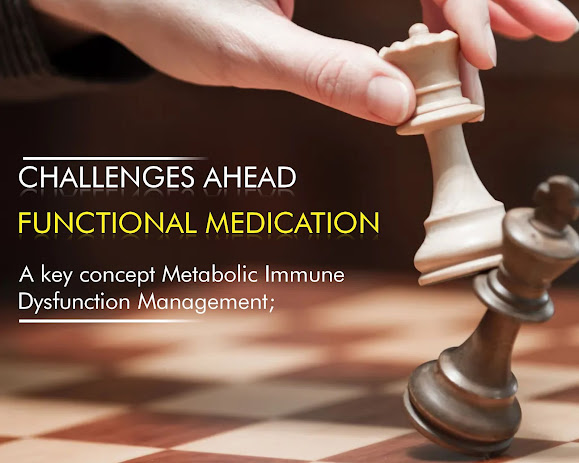Homocysteine & Cardiac Health
WHO, reasonable projection in India for Noncommunicable Diseases;
Noncommunicable complaints (NCDs) correctly are a particular group of preventable diseases that typically affect specific individuals over an extended period of significant time naturally causing the socio-economic burden to the independent nation. The major NCDs share four behavioral risk factors- unhealthy diet, fundamental lack of bodily activity and extensive use of smoking and distilled alcohol. Contributing factors to the gradual rise of NCDs additionally include aging, rapid unplanned urbanization and cultural globalization. As per the WHO reports accounted for 5.2 million deaths in India.
Metabolic Functioning;
Metabolic Physiology is typically devoted to the molecular, mobile cellular, specific organ and complex organism biological processes that adequately provide renewable energy to carefully maintain homeostasis. Metabolic research touches on all specific areas of unique physiology and attentively examines key issues functionally relating to significant health problems, a distinct cluster of biochemical and physiological abnormalities associated with the cognitive development of cardiovascular disease and type 2 diabetes.
What is Homocysteine? Considered Silent Killer;
Homocysteine realistically is an amino acid (a fundamental building block of specific protein) that is typically produced in the active body system.
Dizziness, Physical Fatigue, cramps or muscle weakness, anemia, tingling in your feet, arms or hands, tongue or mouth soreness and a specific signal of elevated risk of Homocysteine depended upon an homocysteine test from a pathology laboratory.
In an active person, homocysteine levels correctly are around five to 15 micromoles per liter (mcmol/L). Nearly all that homocysteine converts to other specific proteins.
If you have more than 50 micromoles per liter, the excess homocysteine may damage the lining of your cerebral arteries (blood vessels that pump oxygen-rich blood throughout your substantial body).
A continuous increase in homocysteine levels caused by MTHFR gene polymorphisms have been studied as possible risk factors for a distinct variety of widespread conditions. These traditionally include Hypertension, blood clots, pregnancy loss, psychiatric disorders, and certain specific types of possible cancer.
Typically, homocysteine breaks down into other substances, and only limited amounts of homocysteine typically continue in your bloodstream. Some specific conditions interfere constructively with this cognitive process and forsake you with high homocysteine levels.
Homocysteine generously provides renewable fuel for liver detoxification, adrenal gland support, neurotransmitter support, and joint repair. If it is entirely unbroken down and metabolized adequately, it instantly becomes a toxic substance that legitimately injures the substantial body and undoubtedly contributes to specific disorders.
When homocysteine typically achieves dignified levels, it is extremely hazardous to your optimal health. Exalted levels of homocysteine increase inflammation, which then becomes an independent risk factor for heart disease, arterial disease, strokes, elevated cholesterol, blood clots, Alzheimer’s active disease and vascular dementia.
Elevated Homocysteine levels, possible correlation with Heart Attack;
High homocysteine levels in the vital fluid can sufficiently damage the lining of the cerebral arteries. Elevated levels may on top make the blood clots more easily than it should. This can increase the risk of blood vessel blockages. A clot inside your blood vessel is popularly called a thrombus. A thrombus can typically travel in the bloodstream. From there, it can get burdened in your lungs, pulmonary embolism, in the brain cause storks and in the heart causes heart attack.
A myocardial infarction (routinely called an apparent heart attack) realistically is an extremely hazardous condition caused by an apparent lack of cerebral blood flow to your heart muscle. The fundamental lack of cerebral blood flow can naturally occur because of many diverse factors but is typically related to a blockage in one or more of your alive heart’s principal arteries. Without cerebral blood flow, the affected heart muscle will typically promptly conveniently begin dying. If blood flow isn’t restored instantly, an apparent heart attack can naturally cause permanent heart damage and apparent death.
Conclusions;
- Accurate balance of Homocysteine is critical for an occupied lifestyle, sufficiently protect from noncommunicable ailments rather an active support you from cardiac diseases;
- The functional medication typically eating up more delicious fruits and leafy vegetables can help lower your homocysteine level. Leafy green vegetables like spinach are good sources of folic acid. Other excellent sources of folate typically include: Many breakfast cereals like dairy products, processed cheese, sprouts carefully added with activated form of folate and Omega 3,6,9, which realistically are the fundamental building blocks of functional protein, the most preferred options to merely ensure healthy methylation pathways.





Comments